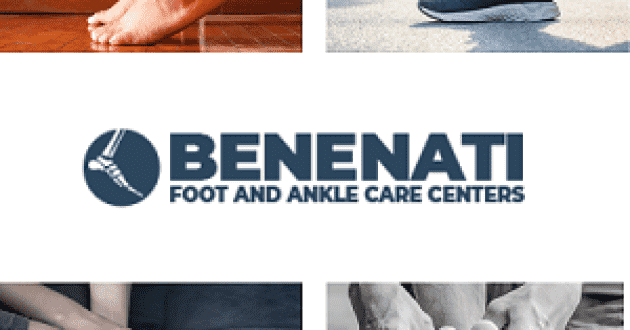10 Common Podiatry Myths Debunked
- - Category: Diseases & Conditions
- - 28 Aug, 2023
- - Views: 223
- Save

Podiatry
Throughout history, humans have often turned to myths to explain the mysteries of our bodies. Although modern medicine has debunked many misconceptions, some myths about our feet persist. Let's unravel seven podiatry myths that need to be set straight.
1. Foot pain is just part of aging
While our feet, like the rest of our bodies, might experience wear and tear over time, assuming that foot pain is an inevitable part of aging is a mistake. Foot pain is never normal, and you shouldn't ignore it. There can be various reasons behind foot pain, and there are multiple treatment options available.
2. Improper shoes cause bunions
Bunions are often the result of a hereditary mechanical flaw in the foot's structure. While wearing tight shoes might exacerbate bunions, they aren't the root cause. Certain foot types are more predisposed to developing bunions. While treatments can alleviate pain, only surgery can correct the bunion's deformity.
3. Corns have roots
The notion that corns have roots might stem from the pain they cause when pressed. Corns, similar to calluses, form due to friction and pressure. They commonly develop on non-weight-bearing parts of the foot, like the tops and sides of the toes. However, they can also appear on weight-bearing areas, like the ball of the foot. Wearing well-fitting shoes and addressing conditions like hammertoe and bunions can prevent corns. Home removal is possible, but severe cases require professional corn removal procedures.
4. Walking barefoot harms your feet
Walking barefoot can enhance muscle strength, balance, and coordination. Discomfort might arise due to tight calf muscles, but a simple stretch can often alleviate this issue.
5. Heel spurs always cause heel pain
Heel pain is a frequent complaint in podiatry, often associated with visible heel spurs on X-rays. However, these bony growths are not always the pain source. Inflammation of the plantar fascia, a tissue band spanning the arch, is often responsible for heel pain. Other factors like nerve entrapments and stress fractures can contribute too.
6. Duct tape cures warts
It's true that some warts can be eliminated by cutting off their oxygen supply. However, using duct tape isn't an effective solution for plantar warts, also known as verrucas. These warts are caused by the human papillomavirus (HPV) and penetrate the skin deeply, making oxygen deprivation inadequate for their removal.
7. Toenail fungus Is just a cosmetic concern
Toenail fungus, despite its primarily aesthetic symptoms of thickened and discolored nails, is highly contagious and spreads rapidly. Left untreated, it can lead to the deterioration of the nail.
8. Foot pain can be alleviated with shoe inserts
Let's unravel a myth that's "kind of true." Custom orthotics can indeed help ease specific foot pains like plantar fasciitis, bursitis, and tendinitis. But here's the twist – the wrong shoe insert might actually worsen your foot pain instead of relieving it. The only surefire way to find out what works or doesn't is by having a chat with your podiatrist.
9. Only the elderly require podiatry treatment
The notion that foot care is exclusively meant for seniors seems quite odd, doesn't it? Reality check: foot issues don't care about age, striking whenever they please – even in newborn babies. Podiatrists tackle a broad spectrum of foot problems, and there's no age limit on who they can help.
10. Improper trimming leads to ingrown toenails
Here's a persistent myth to tackle. The truth is ingrown toenails usually arise because the nails take a curvy path, growing downward and digging into the skin. Blame it on the nail's natural shape, not just improper trimming. Genetics often play a role, with inherited curvature leading to this discomfort. Nerve damage might also have a hand in this nail mischief.
Understanding the truth behind these common podiatry myths is essential for taking proper care of your feet. Remember, consulting a podiatrist for accurate guidance is the key to maintaining healthy and pain-free feet.



